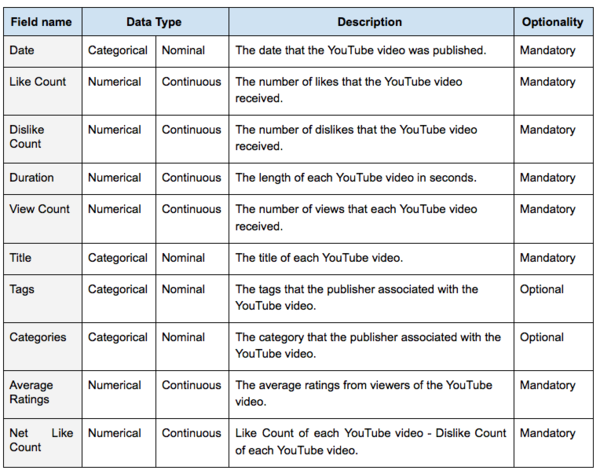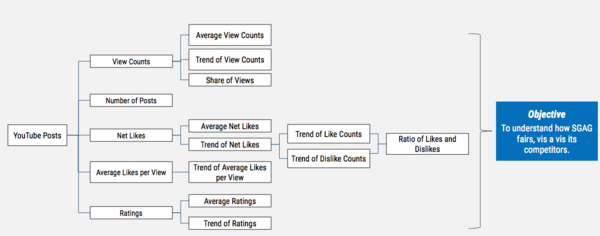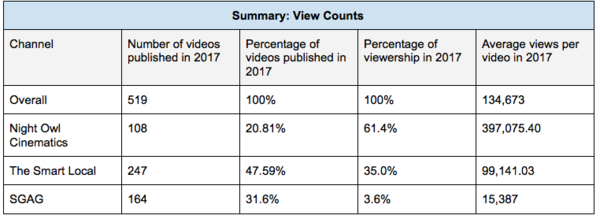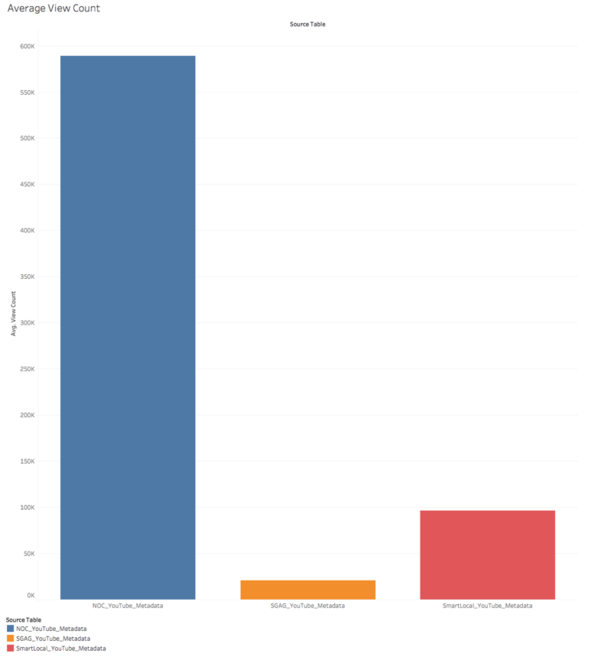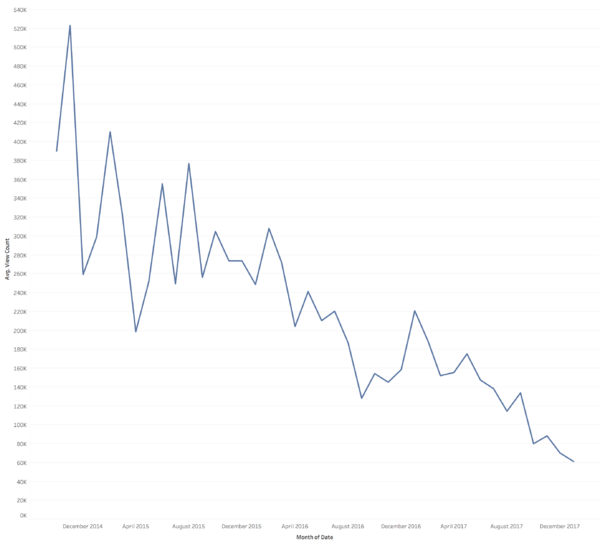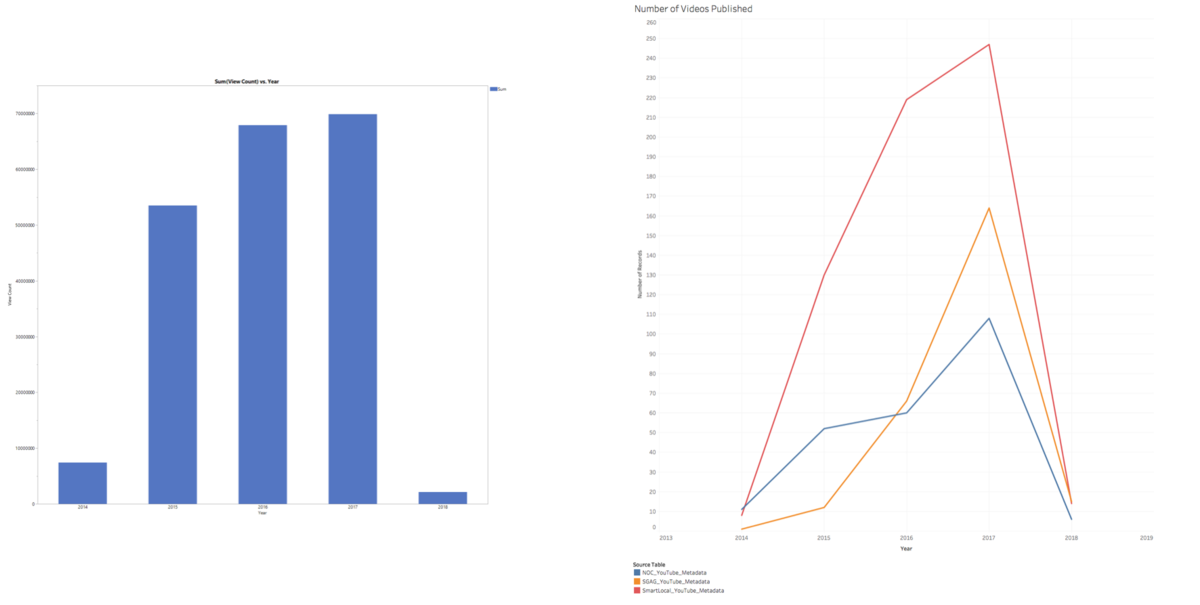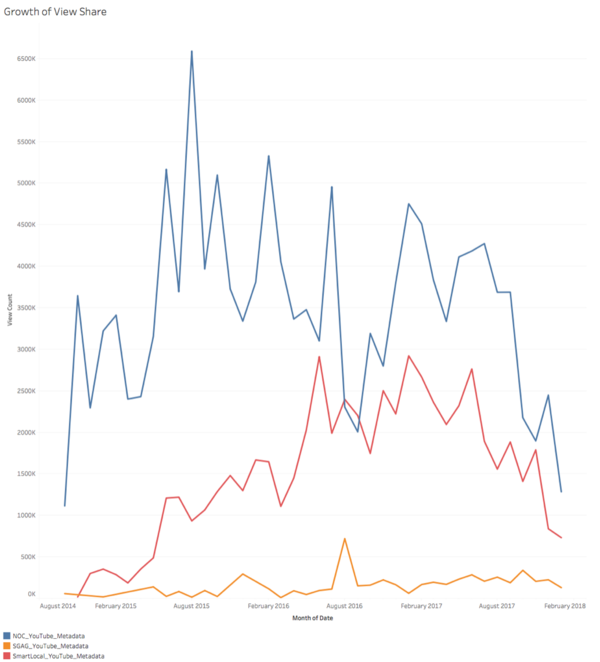Difference between revisions of "Group04 Interim"
| Line 129: | Line 129: | ||
In other words, viewers are not watching every single video published and each channel is producing more varied content that appeals to different customer segments. | In other words, viewers are not watching every single video published and each channel is producing more varied content that appeals to different customer segments. | ||
| − | [[Image: growth.png | | + | [[Image: growth.png |600px|center]] |
As seen in the graph above, The Smart Local's view counts have been growing at the fastest rate, relative to its competitors. | As seen in the graph above, The Smart Local's view counts have been growing at the fastest rate, relative to its competitors. | ||
| + | |||
<u>Share of View Count</u> | <u>Share of View Count</u> | ||
Revision as of 19:41, 18 February 2018
| GROUP4 |
| PROPOSAL | FINAL |
|---|
Contents
Exploratory Data Analysis
Objective 3: Competitor Analysis
YouTube Posts
To help SGAG conduct a comprehensive competitor analysis on YouTube, we scraped all metal data from Night Owl Cinematic, TheSmartLocal and SGAG’s YouTube channels using YouTube-DL into .json files. Using Python, we parsed the necessary data into a csv format before importing the data into JMP Pro.
Data Preparation
Removing Outliers
View Counts
After which, we removed outliers based off view counts as view count is the only indicator of a viral YouTube video. It is also important to note that we removed such outliers by channel as each channel would have different levels of average performances. We did this using JMP Pro's Quantile Range Outliers analysis, using the default tail quantile of 0.1 and Q scaling factor of 3. The table below shows examples of outliers:
As mentioned in the proposal report, the Pokemon Go prank was a viral video as it was a prank carried out during the Pokemon Go craze by the SGAG team who tricked the public crowd into thinking there is a Snorlax nearby, when there was none.
Published Date
To ensure a fair comparison in terms of time frame, we would be filtering the data to only include videos published after 15 October 2014. This is as the first SGAG YouTube video was published in 15 October 2014.
The table below summaries the new number of data points after removing such outliers:
Creating New Variable
We created the following new variable that may be used for analysis:
Updated Metadata Table
Below is the final metadata of the data we have transformed and cleaned.
Overview EDA of YouTube Video Posts
The graph below showcases the various analysis that we would be performing and its associated objectives.
It is also important to note that we would be looking at each and every performance indicator (View Counts, Net Likes and Ratings) as they are not highly correlated with each other. In addition, the table below showcases the key indicators of SGAG.
View Counts
View counts are used to judge the performance of each YouTube video. By analyzing view counts, we are able to understand the performance SGAG, vis a vis its competitors. We would also look at the trends and view share of each channel to understand what SGAG can do to perform better at a macro level.
Average View Count
As seen in the image below, Night Owl Cinematics is the clear leader in terms of average view counts whereas SGAG lags far behind. It is important to note that they are all statistically different from each other at a 95% confidence interval.
Overall View Count Trends
As seen in the graph, there seems to be a general declining trend in terms of average view counts. A confirmatory analysis in the form of a correlation analysis was performed and this was confirmed. The correlation coefficient is at -0.24. This declining trend started consistently post 2015.
However, the total view counts have been increasing since 2014. That being said, the average view counts have been decreasing as the number of videos published have been increasing consistently since 2014. These can be in seen in the graph below.
In other words, viewers are not watching every single video published and each channel is producing more varied content that appeals to different customer segments.
As seen in the graph above, The Smart Local's view counts have been growing at the fastest rate, relative to its competitors.
Share of View Count
As the average view counts for each channel are statistically different from each other at a 95% confidence interview, we are able to compare across channels. As seen in the graph below, in 2017, SGAG published 31.6% of videos but only obtains a low 3.6% in terms of share of view counts.
In short, the quantity of videos published is not the driving factor of video performance. This can be best exemplified by Night Owl Cinematics, whereby it accounts for the least number of videos published but the majority of viewshare in 2017.
Methodology
In progress.



